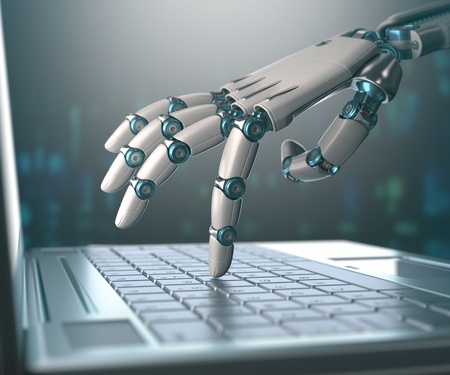Preparing for artificial intelligence in the working environment is a daunting prospect for tech-averse hiring teams.
For those exploring what it means for their business, here are 8 basic explanations to get started:-
Algorithms : An algorithm is a set of rules to be followed in a problem solving situation or calculation. Algorithms take large amounts of data generated during the hiring process and transform it into information that HR can use in candidate selection. In a previous study, candidates recruited via algorithms remained in their job 15% longer than those hired by HR. Algorithms help to improve candidate selection and reduce the potential for a bad hire.
Artificial Intelligence (AI) : Often referred to as the ‘fourth industrial revolution’, artificial intelligence (AI) is a machine that is capable of imitating intelligent human behaviour, which includes making decisions and performing basic tasks such as problem solving, planning and learning. AI automates repetitive and mundane admin tasks, including screening and applicant updates throughout the hiring process. It is also behind the rise in chatbots and the use of video screening.
Chatbots : Short for chat robot, chatbots are becoming more prolific in talent acquisition. Like Apple’s Siri or Amazon’s Alexa, chatbots in recruitment use artificial intelligence (eg, machine learning - see below) to comprehend questions and respond. Chatbots can be used across different platforms, including e-mail, messaging apps and through your applicant tracking software. Chatbots are designed to simulate conversations with visitors to your careers site and are rapidly becoming an essential tech tool for high volume recruitment. Used effectively, chatbots add a more engaging and interactive element to your hiring process. A survey carried out earlier this year found that over half of candidates are comfortable interacting with chatbots during the application process.[1]
Gamification : Gamification applies the common elements of game playing to other areas of online activity, including marketing. In recruitment it is frequently used by graduate employers, including Lloyds Banking Group, Deloitte and in PwC’s popular Multipoly to attract young talent and create a more engaging candidate experience. Incorporate gamification into your recruitment process through your HR technology.
Machine learning : Similar to artificial intelligence, machine learning provides AI with the algorithms that make it more intelligent. In hiring, machine learning can reduce your time to hire and is used to automate candidate screening, often utilising the data available in your recruitment analytics relating to your most successful hires. Sophisticated machine learning algorithms in HR software can be used to evaluate the potential cultural fit of a candidate through language choice and even facial expressions.
People analytics : People analytics combines data and analysis to gain insight into a range of issues related to your employees, including leadership, performance management and recruitment. For more insight, please see our previous article which provides a more detailed introduction to people analytics.
Sentiment analysis : It may not be a term you are familiar with but sentiment analysis interprets the effect that language has on people, whether negative, positive or neutral. In recruitment it can be used to analyse the impact of the wording of your job posts. For example, last we year we reported that by replacing the word ‘hacker’ with ‘developer’ in their job posts, social media platform Buffer saw an increase in the number of female candidates applying to their vacancies. HR analytics in your recruitment software provide more insight into how the use of specific words can deter talent from apply to your jobs. Software which uses sentiment analysis can also suggest more suitable words to attract a more diverse talent pool.
The Turing Test : The Turing Test was conceived by scientist Alan Turing in 1950 based on the premise 'can machines think?' Today it refers to the potential for artificial intelligence to convince people they are interacting with a person rather than a machine. One of the most successful examples is the Mitsuku chatbot which has been awarded the 2017 Loebner Prize[2] (based on the Turing Test) for the third time but has yet to convince the judges it is human. It's a term you may hear more of in relation to AI as automation in the workplace rises.
Take your first step towards understanding AI with Advorto’s world class recruitment software that helps you to hire better people faster. Contact us today to find out how.
You might also like to read:-
8 HR Technology Terms Your Business Needs Today
Why It’s Time For HR To Prepare For AI
[1] Source : https://www.allegisglobalsolutions.com/en-nl/blog/2017/may/ready-for-robots
[2] Source : http://www.aisb.org.uk/events/loebner-prize






